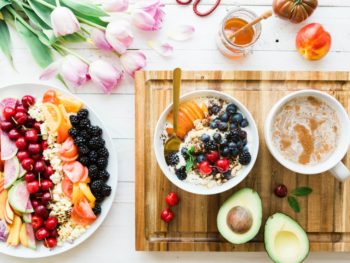Below is my blog post Portion Size Matters for Huffington Post.
You can also read it HERE.
A new study out of Temple University suggests that one solution to helping kids eat less is to give them smaller plates. With childhood obesity rates so high, we need effective strategies to help youngsters eat more healthfully and eat less.
The study, published in the journal Pediatrics, found that plate size matters, at least for first-graders. The research was conducted at lunchtime on first-graders. Eighty percent of children served themselves 90 more calories when using large, adult-sized plates than when using smaller plates. And the students ate about half of the additional calories that they piled onto the plate. According to the researchers, the additional calories on these bigger plates were probably carbohydrates or protein, as kids did not usually serve themselves extra vegetables.
These results make perfect sense to me as a nutrition researcher tracking portion-size trends. As I wrote in my book The Portion Teller Plan, the sizes of plates have increased in recent years, and could certainly be an additional contributor to the obesity epidemic in our country. When given a larger plate, consumers tend to pile on more food.
Indeed, research from Cornell University conducted on adults found that people eat more off of larger plates. They found that a food portion looks smaller when it is placed on a large plate. And this new study confirms this phenomenon in kids.
I often suggest to clients in my private practice to eat off of downsized dishes. Using a smaller dish makes a smaller portions look like more food. And dieters do not want to stare at a half-empty plate. It makes them feel deprived. When one of my clients started eating off of her grandmother’s dishes, she began to lose weight. She ate less without even realizing it.
Another suggestion that I offer clients is to use a larger plate for salad (a great way to increase your veggie consumption) and use a smaller plate for the main dish. This way, you do not have to go out and buy new dishes.
Divide-and-conquer is another great approach when thinking about your plate. As USDA’s dietary guidance icon MyPlate suggests, fill half of your plate with fruits and veggies, one-quarter with healthy grains such as brown rice or quinoa, and one-quarter with protein-rich foods such as grilled fish or chicken.
One caveat: When using a smaller plate, remember not to pile on your food. If food can fall off of the plate, you probably served yourself too much.


